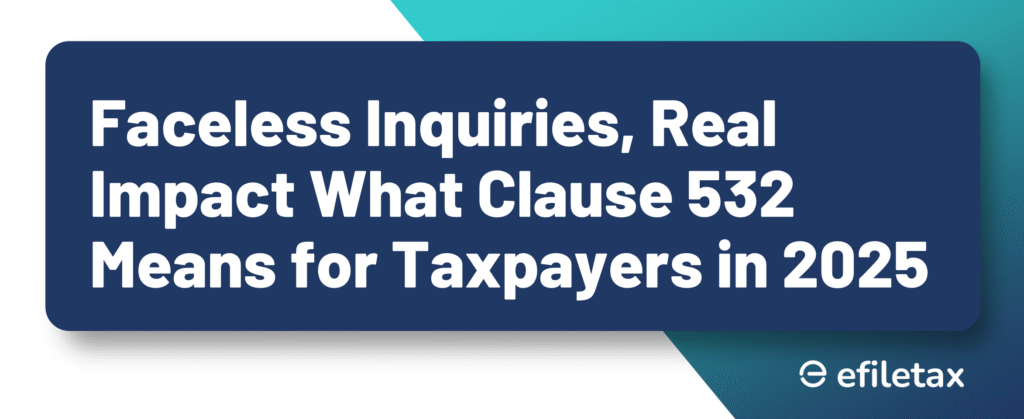
Faceless Inquiry in Income Tax A New Chapter Begins
The faceless inquiry in income tax is being transformed in the Income Tax Bill, 2025 under Clause 532, replacing the older Section 142B of the Income-tax Act, 1961. This marks a crucial evolution in India’s tax administration — aimed at ensuring transparency, fairness, and ease of compliance without face-to-face interaction.
What is Faceless Inquiry in Income Tax?
Faceless inquiry is a system where the income tax department conducts investigations, assessments, and notices digitally, without any personal interface between the taxpayer and officer. It was introduced to eliminate corruption, reduce harassment, and ensure uniformity.
Clause 532 vs. Section 142B: What’s New?
| Particulars | Section 142B (1961 Act) | Clause 532 (2025 Bill) |
|---|---|---|
| Applicability | Limited to inquiry during assessment | Applies to all proceedings under the Act |
| Mode | Manual or digital | Fully electronic and faceless |
| Authority Involved | Assessing Officer | Centralised Prescribed Authority |
| Taxpayer Interaction | Can involve personal hearing | No personal hearing unless allowed by Board |
| Process Flow | Discretion of officer | Pre-defined, automated allocation system |
| Objective | Simplify scrutiny | Promote trust-based compliance |
| Legal Backing | Introduced via amendment in 2020 | Embedded in core structure of new Bill |
Legal Foundation of Clause 532
- Based on recommendations from the Tax Administration Reform Commission (TARC).
- Draws legal strength from Section 282 (electronic communication) and Section 129 (personal hearing) of the 2025 Bill.
- CBDT may prescribe detailed procedures by notification under delegated legislation.
Source: Income Tax Bill, 2025 (PRS India)
Expert View: One Step Closer to Digital Trust
“Clause 532 is not just a procedural change — it’s a trust signal. It shifts the burden from fear of scrutiny to clarity in digital compliance,” says Rajat Mohan, Senior Partner at AMRG & Associates.
Why This Matters to You
- For Salaried Individuals: Reduced chances of arbitrary scrutiny.
- For Consultants/CA Firms: Clearly laid out procedure = fewer litigation headaches.
- For Small Businesses: Greater ease in responding to notices online.
How to Prepare for Faceless Inquiry in 2025
- Keep digital copies of all invoices, agreements, and filings.
- Respond promptly to e-notices via the e-filing portal.
- Regularly check registered email and SMS alerts.
- Use DSC or e-Verification to authenticate replies.
Subheading With Keyphrase: Handling Faceless Inquiry in Income Tax
- Log in to www.incometax.gov.in
- Navigate to e-Proceedings → Faceless Inquiry Notices
- Download notice, prepare response, and upload supporting documents
- Await acknowledgment; no physical visit required
Key Takeaways
- Faceless inquiry in income tax is now legislatively embedded under Clause 532
- It ensures zero face-to-face interaction unless exceptionally approved
- Taxpayers must adapt to fully digital communication and response modes
- A centralised system will allocate, monitor, and finalise all inquiries
FAQ on Faceless Inquiry (Optional SEO Section)
Q1. Can I still meet an officer under Clause 532?
No, unless CBDT permits in specific cases through notification.
Q2. Is faceless inquiry applicable for past assessment years?
Only if the CBDT prescribes it through retrospective procedural rules.
Q3. What happens if I don’t respond to a faceless inquiry?
Proceedings may be completed ex parte, and penalties can be levied.
Summary
Clause 532 of the Income Tax Bill, 2025 overhauls faceless inquiry procedures by institutionalising fully digital, officer-free tax scrutiny—replacing Section 142B.